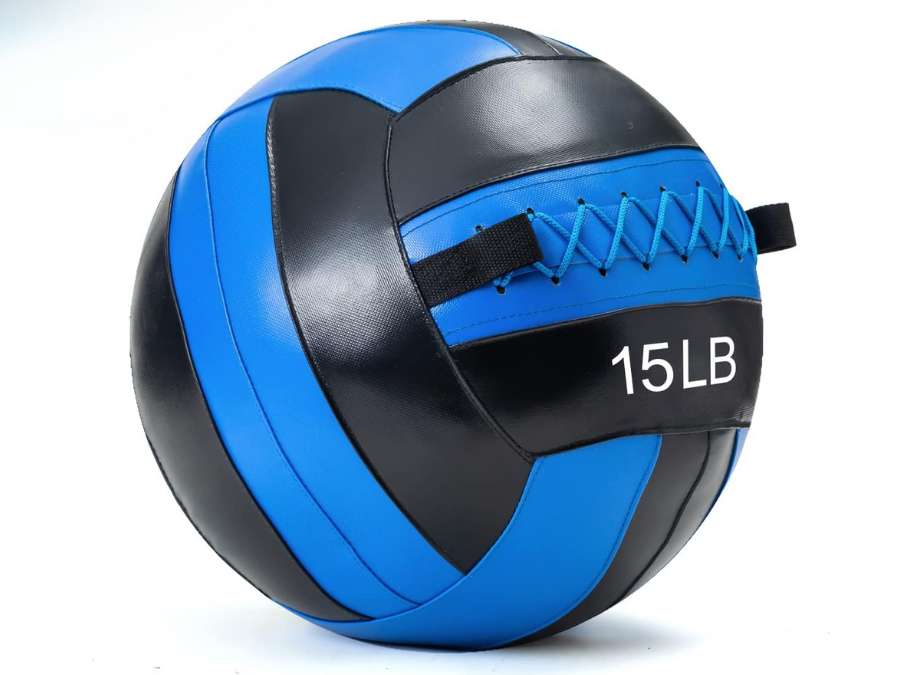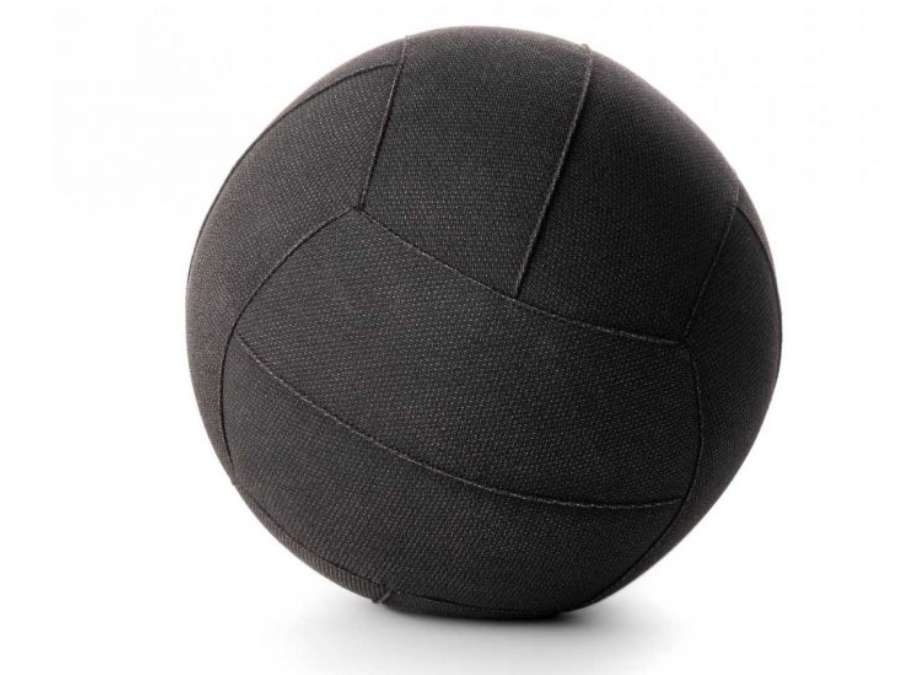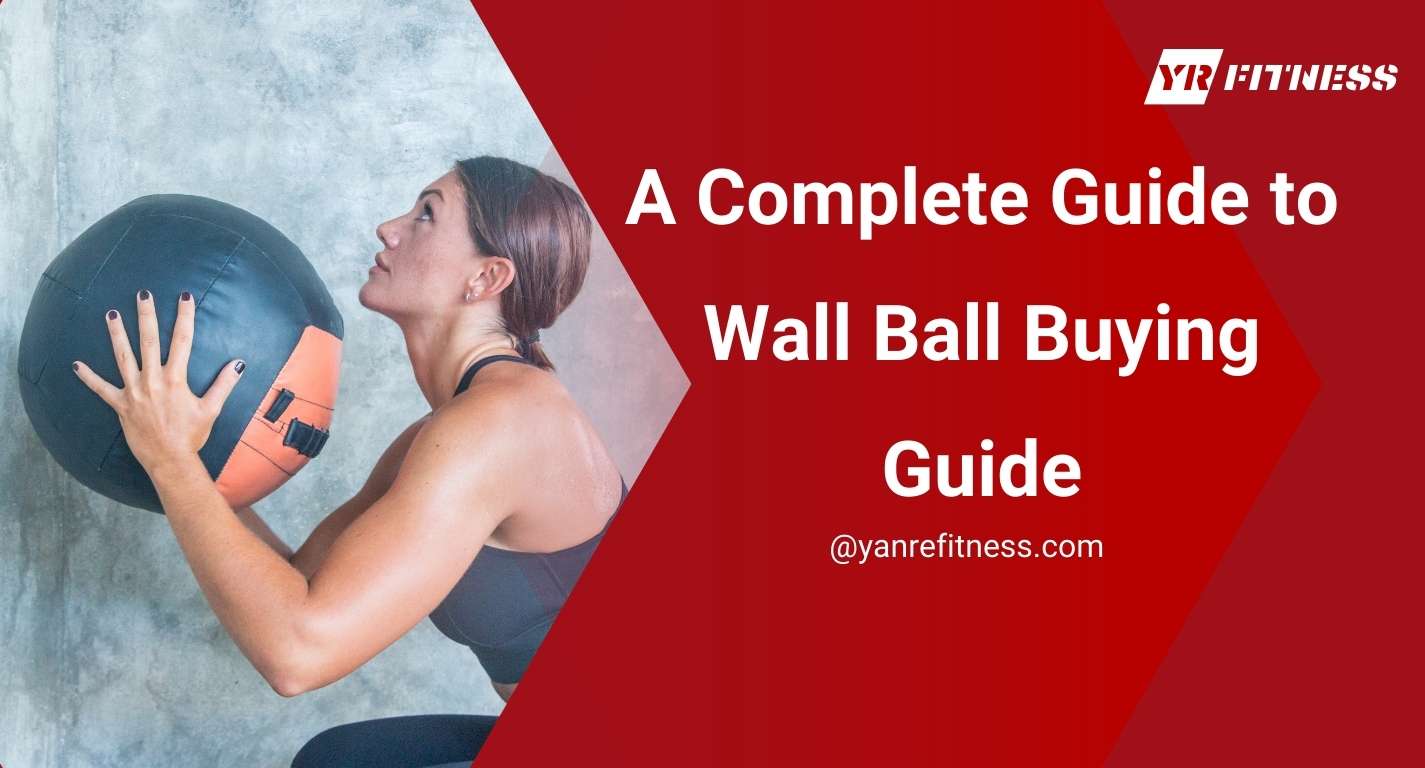Are you looking to upgrade your gym with the right tools for functional training? Wall ball is a newer piece of gym equipment that has quickly become a must-have for any gym.
With over 10 years of experience in the fitness industry, I bring insider knowledge that helps commercial equipment buyers make smart purchasing decisions.
Wall balls may seem like simple equipment, but finding the right one requires careful consideration.
In this guide, you’ll learn all the key factors to help you choose the best wall ball for your gym, ensuring a long-lasting product that suits your clients’ needs.
So, let’s get started!
Table of Contents
1. Quick Comparison of Different Types of Wall Balls
When comparing different types of fitness balls, it’s important to understand their unique characteristics and intended uses. Now get this, each ball has distinct features that make it suited for specific exercises. Below is a quick comparison to help you choose the right one for your gym:
Type | Size | Material | Grip | Fitness Purpose |
Wall Ball | Larger than medicine and slam balls | Soft, shock-absorbing material | Designed to bounce back after hitting the wall | Ideal for throwing against walls and rebounding exercises |
Medicine Ball | Generally smaller than wall balls | Hard, durable material | Not very bouncy, provides firm grip | Originally designed for strength training and coordination |
Slam Ball | Small, typically 10-11 inches in diameter | Hard rubber or vinyl shell filled with sand or gel | Minimal bounce, built for heavy impact | Best for repeated slamming exercises, built to withstand constant dropping |
2. Wall Ball Materials
Commercial wall balls wear out over time, so choosing the right material is important for durability. A good-quality wall ball usually costs over $50, and some can go up to $100. To get the most life out of it, pick one made from sturdy materials. Here are the key materials to consider:
Fillings
Wall ball fillings are made up of 2 parts:
- Shape-retaining filler
- Weight filler
Shape-Retaining Filler:
The shape-retaining filler keeps the ball firm and prevents it from deforming over time. Different materials are used, including:
- Rags: While inexpensive, rags don’t hold their shape well. They wear out quickly and cause the ball to become uneven, which affects its balance.
- Cotton: Cotton provides better shape retention than rags but still deforms after extended use.
- Polypropylene Cotton: At YR Fitness, we use polypropylene cotton because of its superior elasticity and long-lasting performance. The cool thing is, this material doesn’t absorb moisture, allowing it to maintain its shape, even after heavy use. Polypropylene cotton comes in 2 types:
- Pure White Polypropylene Cotton: The best choice for wall balls, offering greater durability, fluffiness, and elasticity. This type is found in higher-quality, more expensive wall balls and maintains its shape better under heavy use.
- Colored Polypropylene Cotton: Cheaper and less durable than pure white, this option is used in lower-cost wall balls but won’t last as long or provide the same elasticity.
Weight Filler:
The weight of a wall ball is adjusted by adding different materials to the inside. The options include:
- Rubber Particles: Used in lighter wall balls (under 9kg), rubber particles offer good durability and allow for consistent weight distribution. Rubber particles don’t break down as quickly as cheaper fillers, making them a preferred choice for commercial-grade balls.
- Iron Sand: Heavier wall balls (over 9kg) typically use iron sand to reach their desired weight. Iron sand is dense and provides stable weight distribution, ensuring the ball remains balanced during use.
- Yellow Sand: A low-cost filler often found in budget wall balls. It’s not ideal for high-performance use because it can cause the ball to lose its shape faster. Some countries ban the import of wall balls filled with yellow sand due to the risk of introducing parasites.
Cover
The cover of a wall ball is critical for its durability, as it needs to withstand repeated impacts against hard surfaces. The most common materials used are:
- Synthetic Leather: Known for its durability and grip, synthetic leather is widely used in wall balls. It comes in 2 main forms:
- PU (Polyurethane): PU offers a smooth, comfortable grip that mimics real leather, but it’s not as durable in high-intensity environments. Over time, especially with heavy use and exposure to sweat, PU balls may develop surface damage and become slippery, typically lasting less than a year. Despite these drawbacks, polyurethane remains a widely used material across various industries. In fact, the global polyurethane market was expected to grow to USD 118.46 billion by 2032, with a projected annual growth rate of 5.4% from 2024 to 2032 according to Polaris Market Research.
- PVC (Polyvinyl Chloride): PVC is much more durable than PU, with a lifespan of 2-3 years. It also has better resistance to impact and wear. There are 3 grades of PVC:
- 1000D: The highest quality, offering the best resistance to wear and tear, and excellent anti-slip performance.
- 600D: A mid-grade option that offers moderate durability and wear resistance. It is a suitable choice for gyms needing reliable wall balls at a lower cost.
- 500D: The lowest grade of PVC used for wall balls. While it is less durable than 600D, it still provides decent wear resistance, making it a budget-friendly option for facilities that need basic performance without heavy use.

- Vinyl Coating: Vinyl coatings on wall balls are essential for protecting both the ball and the wall during use. A strong vinyl layer prevents moisture from seeping in, which could damage the ball over time. It also ensures the ball won’t leave marks on the wall or crack from repeated impacts.

- Kevlar: Kevlar is an advanced material known for its incredible strength and durability. It’s 5 times stronger than steel but much lighter, which is why it’s used in high-performance wall balls. Kevlar balls are more expensive but are built to last in even the toughest gym environments.

3. Wall Ball Sizes and Weights
Choosing the right wall ball for your facility requires considering both its size and weight to match the needs of your clients and their specific training programs. Here’s the thing, wall balls come in various sizes and weights, offering flexibility for different exercises and fitness levels. Here are the most common options:
Wall Ball Sizes
- Small (around 12 inches): Smaller wall balls are easier to handle and throw, making them ideal for quick, controlled movements. This size works well for agility and speed-focused drills, especially in high-repetition exercises.
- Medium (around 14 inches): The most commonly used size, offering a balance of ease of use and a versatile range of motion. Medium-sized wall balls are suitable for general fitness programs and cater to most users’ needs.
- Large (around 16 inches and above): Larger wall balls are bulkier and suited for strength and power exercises. They are used in more intense programs where control and force generation are key.
Wall Ball Weights
- 4 lbs (2 kg): This is the lightest option, mainly used for basic training and building foundational movements. It’s a good fit for beginners focusing on form and coordination.
- 6 lbs (3 kg): Slightly heavier, offering moderate resistance for general fitness routines. This weight is effective for improving endurance while maintaining control.
- 8 lbs (4 kg): Suitable for more dynamic movements and intermediate users. It provides a bit more challenge while still being manageable for a variety of exercises.
- 10 lbs (5 kg): A mid-weight option, frequently used across many fitness programs. It offers a good balance between ease of handling and enough resistance to boost overall strength.
- 12 lbs (6 kg): A heavier weight ideal for strength-building exercises. It’s often utilized in high-intensity training or partner workouts.
- 14 lbs (7 kg): Designed for advanced training, this weight is perfect for power-focused exercises. It’s recommended for experienced users seeking a greater challenge.
- 16 lbs (8 kg) and up: The heaviest wall balls, starting at 16 lbs and up, are best for experienced athletes and strength-focused programs. These provide maximum resistance for demanding training sessions.

4. Step by Step Process of Wall Ball Manufacturing
The manufacturing process is the series of steps that turn raw materials into a finished product. Knowing how this process works helps you make better decisions when working with suppliers and inspecting factories. The more you understand, the better your chances of getting top-quality products at competitive prices. Let me explain the process below:
Step#1 Cover Sewing
The first step is sewing the cover for the wall ball. This cover is made from durable materials like synthetic leather or vinyl, designed to handle the impact of repeated use. Strong stitching is essential to ensure the cover holds up during intense workouts.
Step#2 Logo Treatment
Next, the logo or brand marking is applied to the cover. This step involves printing or embossing the logo in a way that is both durable and visually appealing. It’s important that the logo remains clear even after extensive use.
Step#3 Filling
The wall ball is filled with two types of materials: shape-retaining filler and weight filler. Shape filling keeps the ball firm and prevents it from deforming over time, while weight filling gives the ball its mass. The balance between these fillers is key to making the ball effective for various exercises.
Step#4 Sealing
After the ball is filled, it’s sealed to keep everything securely inside. Proper sealing ensures that the filling remains intact during use and prevents the ball from losing its shape or weight over time.
Step#5 Packaging
The final step is packaging the finished wall ball for delivery. This step involves checking the quality of each ball to make sure it meets standards before being packed and prepared for shipping to gyms or retailers.
5. Buying Tips and Traps to Avoid
When purchasing a wall ball, it’s easy to overlook some key factors that can affect its quality and durability. The key to getting the best value and performance is paying attention to these important tips:
- Check the Materials: If possible, open the wall ball to inspect the materials inside. Make sure the filling is tightly packed and firm. This ensures the ball keeps its shape and performs well over time. For example, a tightly packed rubber core will provide better durability compared to loosely filled sand or foam.
- Look at the Stitching: Because wall balls take a lot of repeated impact, strong stitching is critical. Look for double or triple-reinforced stitches. This makes the ball more durable and safer for high-speed training. Some manufacturers also fold and sew twice, adding even more strength. Protruding stitches are a good sign of double stitching.
- Focus on Grip: Grip is essential since wall balls can be heavy and are used for throwing and catching. Look for soft and flexible materials like synthetic leather or vinyl, which offer better grip and control.
- Impact Absorption: A wall ball that absorbs impact well helps prevent injuries. If a ball misses the target, its ability to absorb shock can reduce the risk of hitting your face or body too hard.
- Balance the Ball: A well-balanced wall ball has evenly distributed filling, ensuring it rolls straight and bounces back predictably. You can test the balance by rolling it on the ground or throwing it against a wall. If it doesn’t bounce back straight, the weight distribution is off. For example, a ball that consistently veers to one side when rolled likely has an uneven filling, which can make workouts unpredictable.
- Check the Warranty: Make sure to check both the warranty and the drop test results. A reliable wall ball should withstand about 2,000 drops from a height of 4 meters. Longer warranties and better drop test results indicate higher quality. At YR Fitness, we offer durable wall balls backed by comprehensive warranties and rigorous testing.
Conclusion
Choosing the right wall ball for your gym is a crucial decision that impacts your clients’ training experience. This guide provides the essential details to help you make a confident choice.
In conclusion, this wall ball buying guide offers everything you need to choose the best product for your business. If you’re looking for a manufacturer of high-quality wall balls, contact us at YR Fitness—we’re here to help with all your fitness equipment needs.
Dive Deeper Into Our Resources
Looking for more diverse product options? Browse through our handpicked selections:
For some insightful reads, we’ve curated a list of recommended articles just for you:
Still haven’t found what you’re looking for? Don’t hesitate to contact us. We’re available around the clock to assist you.
Related articles:





